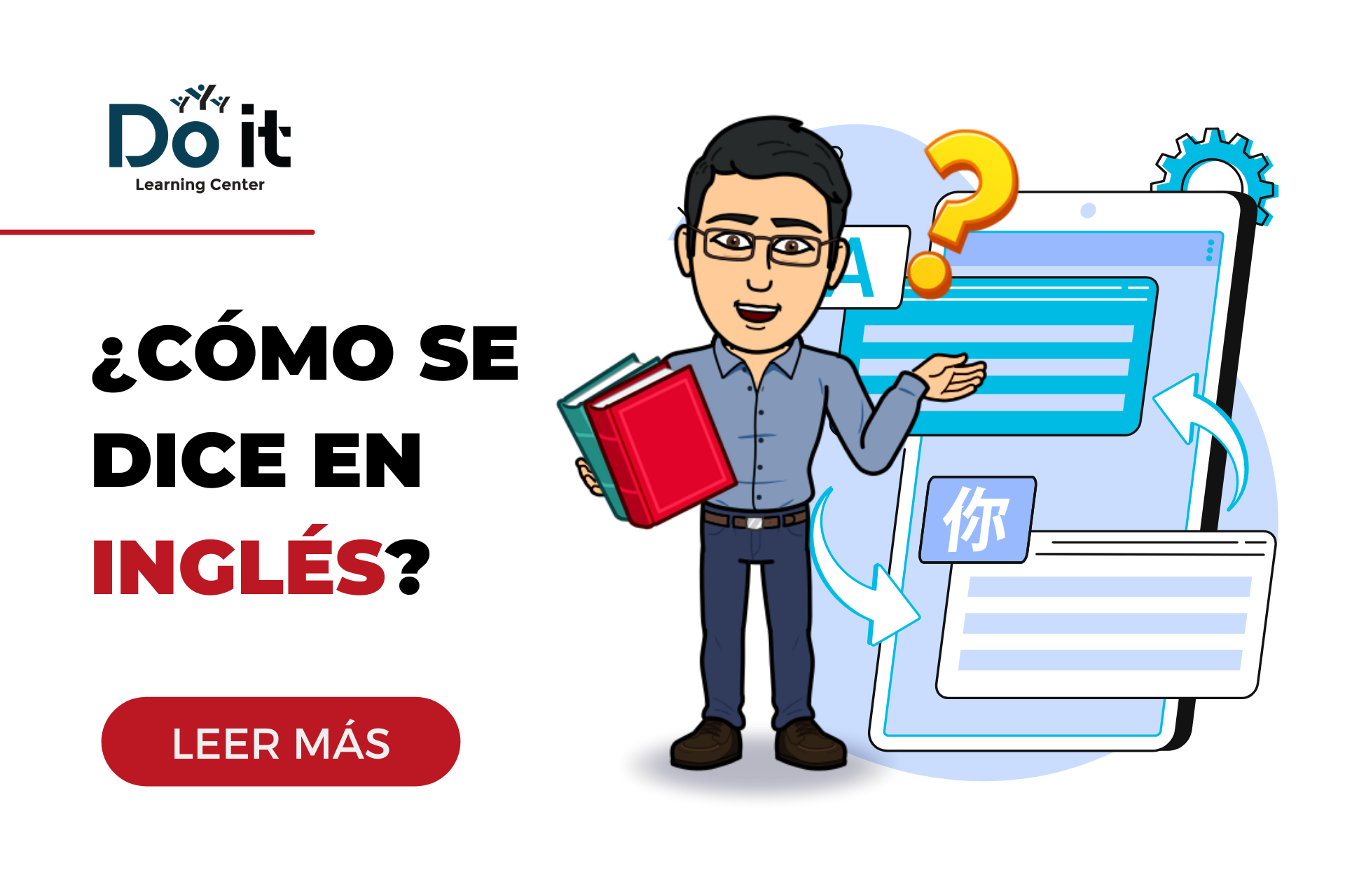Cómo Se Dice 30 En Inglés - Getting The Right Words
When you are trying to express yourself in a different language, a common question often pops into your thoughts: "How do you say...?" This inquiry, a fundamental part of language acquisition, is something we all face, whether we are just beginning our linguistic adventure or looking to polish our communication skills. It's about finding the exact way to voice a concept, a number, or even a simple phrase, so, getting the right words can sometimes feel like a bit of a puzzle.
Figuring out how to put a specific idea into a new language can feel a little bit like solving a riddle. You might have a number in mind, for instance, and you need to know its counterpart in another tongue. This quest for the correct expression, this search for the precise phrasing, is a very natural part of learning to speak or write differently. It is, in a way, about bridging the gap between what you know and what you wish to communicate, which, you know, happens all the time.
Luckily, there are many avenues we can explore to uncover these linguistic connections. From looking things up in a good dictionary to asking someone who knows, the path to finding out "cómo se dice 30 en inglés" is often quite straightforward. We'll look at how the Spanish word for "how" plays a part in these questions, and then, we'll consider some helpful digital tools that make this kind of discovery rather simple, actually.
Table of Contents
- ¿Cómo preguntamos "cómo se dice 30 en inglés"?
- La palabra "cómo" en "cómo se dice 30 en inglés"
- Descubriendo el significado de "cómo"
- ¿Cómo ayuda Google a decir "cómo se dice 30 en inglés"?
- Explorando herramientas para "cómo se dice 30 en inglés"
- ¿Cómo buscar "cómo se dice 30 en inglés" con Google?
- Consejos para aprender "cómo se dice 30 en inglés"
- ¿Cómo podemos recordar "cómo se dice 30 en inglés"?
¿Cómo preguntamos "cómo se dice 30 en inglés"?
When you're trying to figure out how to phrase something in a different tongue, the natural way to pose that question in Spanish is by using the word "cómo." So, for instance, if you wanted to know the English equivalent of the number thirty, you would typically inquire, "cómo se dice 30 en inglés?" This is a very direct and common way to get the information you are seeking. It's a phrase that many people use when they are trying to grasp new vocabulary or expressions, you know, in a foreign language. The structure itself is quite helpful, as it points directly to the item you wish to translate.
The "cómo" at the beginning of that phrase is a really important part. It sets up the whole question, indicating that you are looking for a method or a manner of speaking. This little word, just a little, carries a lot of weight in Spanish, allowing you to ask about processes or ways of doing things. It's a key piece of the puzzle when you are trying to build sentences that ask for information about how something is done or said. So, when you are wondering "cómo se dice 30 en inglés," you are really asking about the proper way to utter that number in English, which is pretty straightforward.
People often look for authoritative ways to find these sorts of answers. You might be hoping for several ways to phrase something, perhaps with some sample sentences or even audio clips to help with the sound of the words. For "cómo se dice 30 en inglés," having a few different examples or even hearing it spoken aloud can make a big difference in how well you grasp the idea. It's like having a helpful guide right there with you, showing you the ropes, which, you know, makes learning a bit easier.
- Finley Point Farms
- Dakota Fanning Booty
- Dames N Games Sports Bar
- Felix Et Heidi Stoll Date
- Georgia Brewer
La palabra "cómo" en "cómo se dice 30 en inglés"
The Spanish term "cómo" is a word that serves a dual purpose, acting as both a question-starter and an exclamation-starter. It carries a little mark above one of its letters, a tilde, because it's a strong, emphasized word, which helps to tell it apart from its unstressed counterpart, "como." This distinction is quite important for clarity in written and spoken Spanish, as a matter of fact. When you see "cómo" with that mark, you know it's asking a question or showing strong feeling, like in "cómo se dice 30 en inglés."
We'll often spend time really focusing on the differences between "como" and "cómo" to make sure everyone can keep them straight. It's rather useful to go through each one separately, introducing the various meanings and ways to use both "como" and "cómo." This helps to build a clear picture of their roles in the language. For example, "cómo" is an interrogative or exclamatory adverb, and it always has that tilde, as in "how will we get out of here?" or "how lovely!"
"Como," on the other hand, can work in a few different ways. It might act as a relative adverb, connecting ideas, or as a joining word, bringing phrases together. The most frequent meaning of "cómo" is to ask about the manner or way something is done, like "in what manner" or "in what way." But, it is also used correctly to express a cause or reason, quite often in the form "how is it that...?" So, when you're asking "cómo se dice 30 en inglés," you are definitely using the interrogative form of "cómo," which is pretty clear.
Descubriendo el significado de "cómo"
The word "cómo" is really quite versatile in the Spanish language. As we've touched upon, its primary job is to ask about the method or the manner in which something happens or is done. So, if you're curious about "cómo se dice 30 en inglés," you're essentially inquiring about the proper or customary way that number is spoken in English. This modal sense of "cómo" is, in some respects, its most common and easily recognized use, forming the backbone of many questions about procedures or descriptions.
Beyond simply asking "how," "cómo" can also convey a sense of cause, especially when paired with "es que." This subtle shift in meaning allows speakers to inquire about the reason behind something, almost like saying "why is it that...?" It's a neat trick of the language, allowing a single word to stretch its semantic reach. For someone trying to master the nuances of Spanish, recognizing these different applications of "cómo" is, you know, quite important for fluent communication, honestly.
Understanding the distinction between "cómo" with its tilde and "como" without it is absolutely fundamental. The tilde is not just a little decorative mark; it signals a difference in emphasis and, crucially, in function. "Cómo" is the stressed form, used for direct questions or exclamations, while "como" is unstressed and serves as a comparison or a conjunction. This grammatical detail, though seemingly small, pretty much shapes the meaning of your sentences, ensuring that when you ask "cómo se dice 30 en inglés," your question is understood precisely as intended.
¿Cómo ayuda Google a decir "cómo se dice 30 en inglés"?
When you're trying to figure out something like "cómo se dice 30 en inglés," digital tools can be incredibly helpful. Google, for instance, offers a range of services that can assist with these kinds of inquiries. Think about Google Forms; while it's usually for creating surveys or quizzes, the underlying technology helps organize information. You might not use a form directly to ask "cómo se dice 30 en inglés," but the way it processes data is similar to how a search engine works to pull up answers for your questions. It's all about getting organized information to you, you know, quickly.
Consider the broader suite of Google's offerings. If you're looking for advanced features for your business, you might try Google Workspace. This collection of tools, which includes things like forms, is designed to help with productivity and communication. The ability to create forms or documents, for example, shows how information can be structured and shared. This kind of system, in a way, mirrors the organization of knowledge that helps you find specific pieces of information, like how to say a number in another language, which is pretty neat.
Accessing your email, like with Gmail, is another example of a "how-to" scenario that Google helps with. There are suggestions about how to get into your account, especially if you're using a public computer. It's really important to make sure you sign out before leaving the machine, which is a very good safety tip. Learning more about how to access your account or how to use a service like Gmail is similar to learning "cómo se dice 30 en inglés" in that both involve seeking out specific instructions or pieces of information, basically.
Explorando herramientas para "cómo se dice 30 en inglés"
Many of us use our mobile devices for all sorts of tasks, and knowing how to check and update your Android version is a practical example of a "how-to" question. You can find the Android version number, the security update level, and the Google Play system level right on your device. This process of checking system information is, in some respects, similar to looking up a word: you're trying to locate a specific piece of data. It's about getting the right details, you know, for your device's health.
Before you download something new, it's always a good idea to check if it's compatible with your operating system and if you meet any other system requirements. This step, this pre-check, is another instance of a "how-to" situation. You're learning how to verify conditions before proceeding, ensuring everything will work smoothly. This kind of careful preparation is, quite literally, about understanding the steps involved in a process, just like understanding the steps to ask "cómo se dice 30 en inglés" or to find its answer.
Google Drive is another powerful tool that helps with various "how-to" scenarios. In its sections, you can get information about how to use its features, how to upload, share, and organize your files, and generally how to make the most of the drive itself. These are all examples of understanding procedures and functions. The ability to manage your digital documents is, in a way, about mastering a set of instructions, which is not so different from mastering a new phrase like "cómo se dice 30 en inglés" or learning how to look it up, honestly.
¿Cómo buscar "cómo se dice 30 en inglés" con Google?
When you want to find out "cómo se dice 30 en inglés," a search engine is often your first stop. The process of using Google Maps to get a preview of directions in Street View is a good illustration of how these tools work. It's important to click on specific points to get those street-level instructions. This act of clicking and exploring, of seeking out visual information for your route, is a lot like typing a question into a search bar and then clicking through the results to find your answer. It's a very active way of finding information, you know, quickly.
Understanding how your computer's cache and cookies operate is another example of a "how-to" topic that Google helps explain. Cookies are small files that websites create when you visit them. They save your browsing information to make your online experience easier and smoother. Knowing how these pieces of data work helps you manage your internet usage. This kind of practical knowledge about how digital systems function is, in some respects, similar to understanding how to formulate a search query for "cómo se dice 30 en inglés" to get the most relevant results.
Your experience with YouTube, for instance, largely depends on whether you are logged into a Google account. Learning more about how to use YouTube, how to navigate its vast collection of videos, or how to personalize your viewing experience is another set of "how-to" instructions. Whether you are looking for entertainment or educational content, knowing how to move around the platform is key. This mastery of navigation is, quite literally, a skill you apply when you are trying to find out something specific, like "cómo se dice 30 en inglés," by searching online, as a matter of fact.
Consejos para aprender "cómo se dice 30 en inglés"
When you are trying to learn new phrases, like "cómo se dice 30 en inglés," there are many ways to make the information stick. For example, knowing how to back up your photos and videos is a helpful skill. The first step is usually to open your photos application, perhaps Google Photos. If you haven't signed into your Google account, you'll need to click to go to Google Photos. This step-by-step process of securing your memories is, in a way, a model for how to approach learning new language bits. It’s about following a sequence to achieve a specific outcome, which is pretty useful.
Another important aspect of managing your digital life, and something that applies to learning too, is knowing how to change your password for security reasons or how to reset it if you happen to forget it. Your Google account password is what you use to get into many Google products. This act of managing your credentials, of ensuring your access and security, is a kind of structured problem-solving. It's about taking specific actions to maintain something important, just like taking specific actions to remember a new phrase like "cómo se dice 30 en inglés."
The consistent use of tools and resources is, you know, really helpful for reinforcing what you learn. Just as you might regularly check your Android version to ensure your device is up to date, or frequently use Google Drive to organize your files, regular exposure to the language you are learning is beneficial. This ongoing interaction, this repeated engagement with the material, helps to solidify new information in your mind. So, if you're trying to internalize "cómo se dice 30 en inglés," using it or looking it up often will certainly help, honestly.
¿Cómo podemos recordar "cómo se dice 30 en inglés"?
To really make a phrase like "cómo se dice 30 en inglés" stick in your memory, repetition is often key. Think about how you might repeatedly check how to access Gmail from a public computer to ensure you don't forget the safety steps of signing out. That consistent practice, that repeated action, helps to embed the information more deeply. It's about making the knowledge almost automatic, so you don't have to think too hard about it when the moment comes to use it, which is, you know, quite practical.
Connecting new information to existing knowledge can also be very helpful. When you are trying to remember "cómo se dice 30 en inglés," you might link it to other numbers you already know, or even to a specific situation where you might use that number. This mental linking, this creation of a network of related ideas, makes recall easier. It's like building a mental map where each piece of information has a place and a connection to other pieces, basically.
Finally, using the phrase in real-life situations, even if just in your head, can strengthen your memory. Just as you might practice using Google Forms to gather information, or actively use Google Drive to manage your documents, actually saying or thinking "cómo se dice 30 en inglés" in different contexts helps to cement it. This active application, this practical engagement with the language, is perhaps the most effective way to truly own a new piece of vocabulary, making it a natural part of your communication, as a matter of fact.

¿Cómo se dice en inglés? - Do It Learning Center

Cómo se dice "Mi toalla" en inglés... made with mematic. - Memes

¿Cómo Se Dice Perro En Inglés? - Dogo